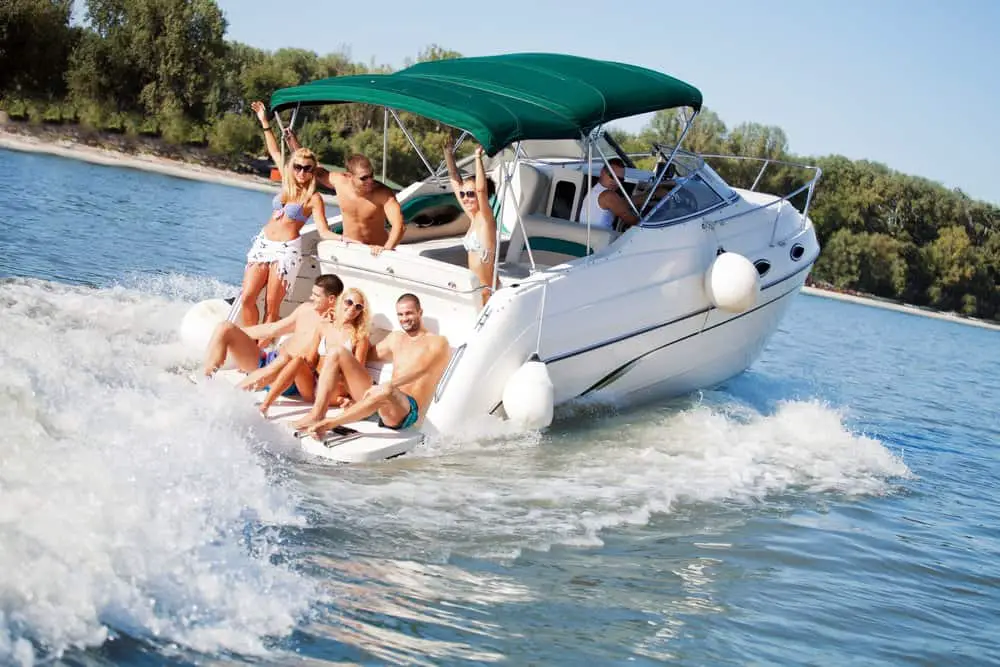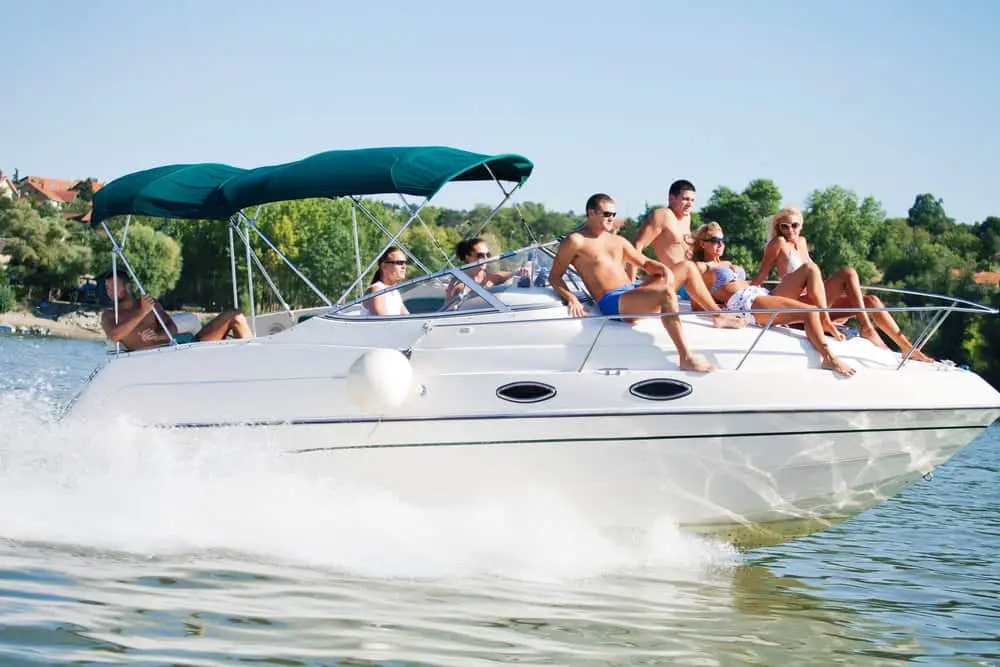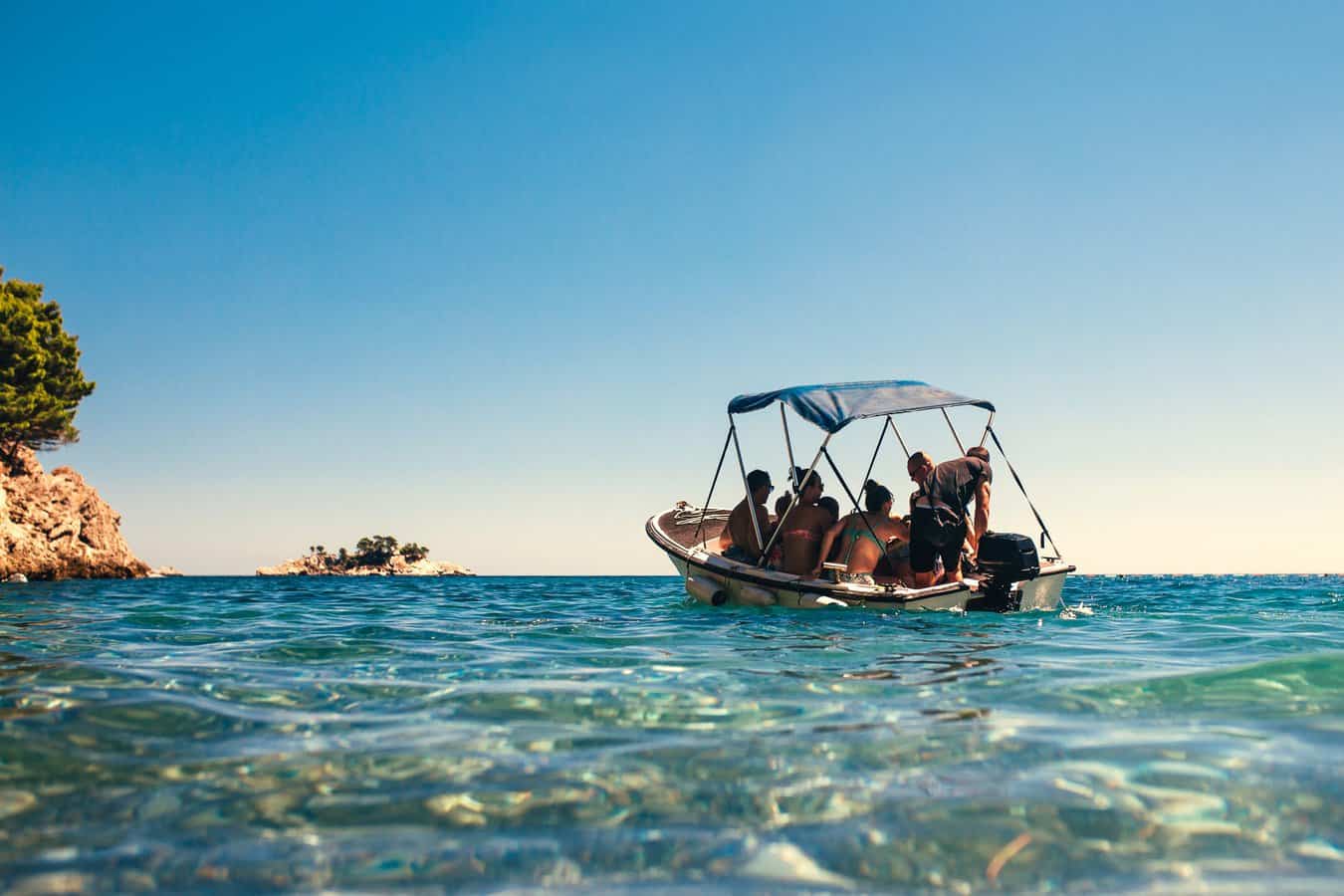What’s the best way to avoid overloading your boat? Your first step is to familiarize yourself with the weight capacity of the watercraft, which should be available either in the user’s manual or on the capacity plate provided.
The weight capacity depends mostly on size, but other factors–such as weather conditions, engine type, and overall stability–also play a role.
The more familiar you are with your vessel, the easier it will be to prevent overloading. Read on to find out why.
Why It’s Important
Even if you’re only using your watercraft for recreational purposes, it’s important to avoid overloading. If the vessel is carrying more weight than it can handle, it could result in an accident.
Although I’ve never been guilty of this behavior myself, I’ve seen a few water-related disasters in my day. Let me tell you this: You don’t want to be involved in a boat accident if you can avoid it. Even if you’re lucky enough to avoid inflicting injury on yourself and others, the damage can be costly.
Fortunately, it’s easy enough to prevent overloading your boat. All you need to do is follow a few simple guidelines.
What Is Overloading?
When a vessel’s maximum capacity is exceeded, the ship is overloaded. This can increase the risk of flooding and capsizing, in addition to reducing speed.
Often, this comes about as a result of storing too much gear or carrying too many passengers. That said, there are other ways of overloading boats that you may not have considered.
If the vessel is equipped with a motor that’s either too big or too strong for its size, it becomes more difficult to control. When boats are out of control, they’re more likely to capsize or collide with other watercraft.
Therefore, outfitting a smaller vessel with an oversized engine falls under the category of overloading. For more on this topic, see Avoiding Overpowering, below.
Understanding Your Boat’s Capacity

If you want to avoid overloading, your first step is to determine your watercraft’s capacity. All smaller boats should be equipped with capacity plates displaying the following:
- Maximum number of passengers allowed
- Maximum total weight of all passengers
- Maximum combined weight of cargo, engine, and passengers
- Highest engine horsepower
Per US Coast Guard regulations, if the watercraft is less than 20 feet long, it’s mandatory for this plate to be installed. It should be visible on the boat’s transom, but if you don’t see it there, check the user manual (see separate section below).
The best way to prevent overloading is to adhere to these restrictions. Keep your total passenger weight and total combined weight below the posted maximum amounts, and don’t be tempted to buy a more powerful engine than you need.
Reading The Vessel Manual
Boats longer than 20 feet aren’t required to post the capacity plate. Instead, owners have to rely on the user manual to get the information they need. If you have a larger boat, you’ll need to study this manual if you want to avoid overloading the vessel.
The engine specs and safe cargo ability should be listed in the manual’s pages. There may also be a separate handbook that provides you with useful info on safe loading and operation. Familiarize yourself with the numbers you find, and keep them in mind the next time you’re planning an excursion.
Keeping An Eye On Conditions
Avoiding adverse weather conditions is one of the most important aspects of water safety. This is true even if you aren’t worried about overloading your boat.
However, stormy weather will impact your boat’s stability, which is especially dangerous if the craft is carrying too much weight. The capacity plate rating assumes that you’ll be boating in good weather, so try not to go out at all if the forecast is looking grim.
If the weather starts to look foreboding once you’re out on the water, you should head in immediately.
On a similar note, it’s a good idea to map out your route in advance. When you know where you’re going, you’ll have a better understanding of any potential issues that might arise. If you don’t have time to do a test run before your planned outing, try to choose a spot that you’ve visited before.
Guaranteeing Stability
As long as you don’t go overboard, adding weight to the vessel will actually help to improve its stability. However, many boats have different load restrictions for salt and fresh water. That’s because salt water increases the buoyancy of the craft, which makes it stay balanced and stable even when it’s at maximum capacity.
The bottom line? Before loading cargo and passengers, check the manual or capacity plate to ensure that you’re following the correct guidelines for the body of water on which you’ll be boating. It might not be feasible to carry the manual with you at all times, so you should do your best to commit these numbers to memory.
Dispersing Weight

Take a look at your boat’s layout. Do you notice that there are seating areas and cargo space located in the front, rear, and center alike? This is no accident. The builders designed it that way to ensure that the weight would be evenly distributed along the length of the stern.
While it doesn’t prevent overloading on its own, weight distribution is key when it comes to keeping the craft stable.
When too much cargo and/or too many passengers are grouped together on one side of the boat, it’s more likely to capsize. You can do your part to prevent imbalance by storing heavier objects in the center of the vessel.
If you’re trying to find the best way to keep the vessel stabilized at high speeds, we would recommend adding a hydrofoil to the outboard motor to lower the bow and raise the stern. This will keep the ride level even when you’re traveling at a great clip. As a bonus, it improves the overall efficiency and quality of the ride.
Avoiding Overpowering
If you own a recreational watercraft, there’s an above-average chance that you enjoy the sensation of speed. In fact, that’s true of most of us. And as long as the conditions are safe and your vessel can handle the challenge, it’s fine to let it rip once in a while.
That said, it’s a bad idea to install an engine that’s designed to handle a much bigger boat. The faster the watercraft goes, the more unstable it becomes. For one thing, the lighter weight of the vessel means that you might not be able to slow down quickly enough to avoid potential hazards.
You’ll also have more difficulty handling the boat during turns, which increases the risk of capsizing.
What’s more, the increased weight on the stern will lower the boat’s center of gravity. This is another hazard that can may cause the boat to tip over, especially in strong winds or rough seas.
As we pointed out earlier, the best way to go about avoiding this issue is to familiarize yourself with the boat’s restrictions, and then follow them. Stick with a motor that’s appropriate for your watercraft.
Setting Passenger Limits
This is another rule that you might be tempted to break from time to time. After all, when it comes to recreational boating, everyone seems to want in on the fun. However, it’s imperative to stay within the maximum weight limitations to prevent overloading.
You can figure out the safe passenger limit for your craft by following a simple formula. First, determine the total area of the boat by multiplying the length by the width. Then divide this amount by 14 for calm seawater conditions; 15 for calm freshwater conditions; or 16 for slightly windy days and days when you intend to test your speed.
Once you have your answer, you’ll know how many people you can welcome aboard. If there are children in the party, you can count them as 1/2 a passenger apiece, while adults should count as 1 whole passenger.
Note that this formula only works if your vessel is a single-hull craft. If you have a pontoon boat or another craft with more than one hull, you’ll have to alter your calculations to avoid overloading your boat.
Additional passengers will contribute excess weight to the vessel, even if they come aboard empty-handed. If they’re bringing gear along, the weight will creep up even further. Make sure your passengers understand that these restrictions are in place for their safety, as well as your own.
Packing and Storing Gear
While we’re on the subject of gear, here’s another tip: Try to keep your cargo weight to a minimum as well. It’s easy to pack too much, especially if you’re putting the trip together at the last minute. Planning ahead can help you avoid overloading.
Of course, personal flotation devices and first aid equipment are a must. Don’t set out without ensuring that you have enough life jackets for everyone on board, as well as the rest of your emergency gear.
Finally, be sure to take advantage of the fact that the cargo space is evenly distributed. Don’t pack all of your gear in one spot, even if it’s easier to access that way. Also, do your best to distribute your passengers in a similar fashion by encouraging them to spread out.
Project “One Too Many” Boating
Check out our article on: What Determines If A Speed Is Safe For Your Boat?

